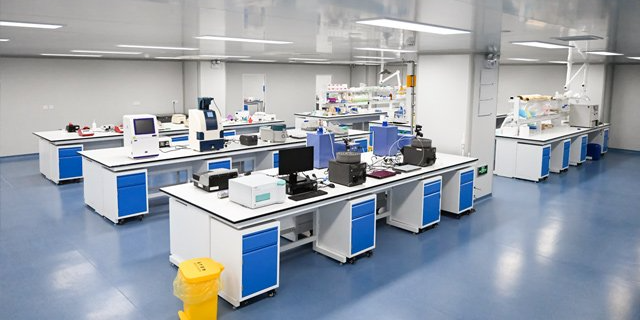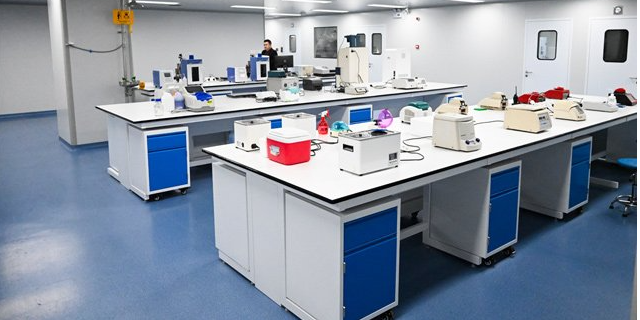Recombinant Human Osteomodulin Protein
Recombinant Biotinylated Human KIR2DL1 Protein,His-Avi Tag性能参数分子别名(Synonyms)CD158A;CD158Ankat1;cl-42表达区间及表达系统(Source)BiotinylatedHumanKIR2DL1ProteinisexpressedfromHEK293withHistagandAvitagattheC-Terminus.ItcontainsHis22-Arg242.[Accession|P43626]分子量大小(MolecularWeight)TheproteinhasapredictedMWof27.1kDa.Duetoglycosylation,theproteinmigratesto48-60kDabasedonSDS-PAGEresult.(Endotoxin)Lessthan1EUperμgbytheLALmethod.纯度(Purity)>95%asdeterminedbySDS-PAGEandHPLC.制剂(Formulation)Lyophilizedfrom0.22μmfilteredsolutioninPBS(pH7.4).Normally8%trehaloseisaddedasprotectantbeforelyophilization.重构方法(Reconstitution)Centrifugethetubebeforeopening.Reconstitutingtoaconcentrationmorethan100μg/mlisrecommended.Dissolvethelyophilizedproteinindistilledwater.储存条件Theproductshouldbestoredat-25~-15℃for1yearfromdateofreceipt.2-7days,2~8°Cundersterileconditionsafterreconstitution.(FGF-21)是FGF基因家族的成员。 基于其结构,FGF-21与FGF-19和-23一起进一步分为FGF的亚家族。Recombinant Human Osteomodulin Protein,His Tag

Angiotensin I Converting Enzyme (ACE-2), also called ACEH (ACE homologue), is a dimeric, zinc-dependent metalloprotease of the ACE family that also includes somatic and germinal ACE. ACE-2 mRNA is found at high levels in heart, testis, and kidney and at lower levels in a wide variety of tissues. ACE-2 is the SARS-CoV and SARS-CoV2 Spike protein receptor in vivo, functions catalytically as a carboxypeptidase to cleave several substrates including angiotensins I and II, and acts as a partner for B0AT1-family amino acid transporters. Through these functions, ACE-2 has been shown to be involved in several diseases including SARS, COVID19, acute lung injury, heart disease, liver and lung fibrosis, inflammatory lung disease, and cardiopulmonary disease . Full length ACE-2 protein includes an extracellular region composed of a single N-terminal peptidase domain and C-terminal collectrin-like domain (CLD), a transmembrane domain, and a short cytoplasmic tail. The N-terminal peptidase region is required for binding to SARS-CoV and SARS-CoV2 spike proteins, while the CLD contains a region that promotes dimerization and association with amino acid transporters.Recombinant Human C5AR Protein-VLPUbcH5a/UBE2D1具有一个保守的E2催化结构域,该结构域含有一个活性位点半胱氨酸残基。

SARS-CoV-2, which causes the global pandemic coronavirus disease 2019 (Covid-19), belongs to a family of viruses known as coronaviruses that also include MERS‑CoV and SARS-CoV-1. Coronaviruses are commonly comprised of four structural proteins: Spike protein (S), Envelope protein (E), Membrane protein (M) and Nucleocapsid protein (N). The SARS-CoV-2 S protein is a glycoprotein that mediates membrane fusion and viral entry. The S protein is homotrimeric, with each ~180-kDa monomer consisting of two subunits, S1 and S2 .The RBD of SARS-CoV-2 binds a metallopeptidase, angiotensin-converting enzyme 2 (ACE-2). Before binding to the ACE-2 receptor, structural analysis of the S1 trimer shows that only one of the three RBD domains is in the "up" conformation. This is an unstable and transient state that passes between trimeric subunits but is nevertheless an exposed state to be targeted for neutralizing antibody therapy. Polyclonal antibodies to the RBD of the SARS-CoV-2 protein have been shown to inhibit interaction with the ACE-2 receptor, confirming RBD as an attractive target for vaccinations or antiviral therapy.
ERBB3,又称HH3(人表皮生长因子受体3),是一种I型膜糖蛋白,是酪氨酸激酶受体ERBC家族的成员。ERBP家族成员作为表皮生长因子(LU)家族的生长因子的受体。在ERBP家庭成员中,因为它含有一个缺陷的激酶域。ERBB3在角化细胞、黑色素细胞、骨骼肌细胞、成肌细胞和雪旺细胞中都有表达。单体ERbb3是一种低亲和性的受体。ERBB3与ERBB2的异聚反应形成高亲和性受体复合物。与此相反,ERBB3同向聚合或异向聚合形成了一个低亲和性的结合物。因为ERBB3含有一个有缺陷的激酶域,ERBB2的激酶域负责通过异二重瓣受体启动酪氨酸磷酸化信号。研究发现,ERBB3细胞质区内的三个离散氨基酸信号对ERBB2的转导至关重要。ERBB3的细胞质域也包含6个一致的结合主题,用于调节P85磷酸酶3激酶(PI3K)的HS2领域,以及一个丰富的一致的结合主题。ERBB3的细胞质域也包含6个一致的结合主题,用于调节P85磷酸酶3激酶(PI3K)的HS2领域,以及一个丰富的一致的结合主题。ERBB3的细胞质域也包含6个一致的结合主题,用于调节P85磷酸酶3激酶(PI3K)的HS2领域,以及一个丰富的一致的结合主题。表达区间及表达系统重组的人HR3/ERBB3蛋白表达自于C-端的HK293细胞和AVI标记。里面有血清20-Thr643。分子量大约71.6鼠AFGF与人AFGF具有96%的氨基酸序列身份,因此它在鼠和人AFGF之间表现出相当大的物种交叉反应性。

Enterokinase,Recombinant,Expressed in E.coli大肠杆菌表达重组肠激酶(不带标签)注意事项1.本产品所讲述的缓冲体系需要自行配置。2.不建议37℃条件下酶切,可能会有非特异性酶切出现。3.在>200mM咪唑,或>200mMNaCl,或>5%甘油,酶切会受到影响。如果样品溶液中含有上述成分的一种或多种,为获得理想的酶切结果,请先将样品透析到25mMTris-HCl8.0缓冲液中,然后再进行酶切实验;若不方便透析,可将样品稀释到咪唑含量在100mM以下,NaCl浓度在50mM以下,甘油浓度小于5%以下进行酶切,酶的用量与蛋白比例不变;若干扰因素很多,且不便去除,需要适当增加酶量或延长酶切时间,有助于得到理想的酶切效果。4.磷酸盐对Enterokinase有很强的抑制作用,痕量的磷酸盐都会严重影响Enterokinase的活性,因此在酶切体系内不能存在磷酸盐。5.本品是具有高酶活力重组肠激酶,切割蛋白使用量少,可不考虑除去。后续如需去除重组肠激酶,可用阴离子交换树脂(如DEAE-FF)对其进行洗脱。推荐洗脱条件如下:平衡缓冲液:25mMTris-HClpH8.0洗脱缓冲液:25mMTris-HClpH8.0,含100mMNaCl6.蛋白酶切效果不好,可适当增加酶量,或适当延长酶切时间。重组型TEV蛋白酶(rTEV)是经过基因工程改造和纯化后的重组蛋白酶,保持天然TEV酶的功能活性。Recombinant Biotinylated Human RGMa Protein,His-Avi Tag
人血清白蛋白(HSA)是脂类等物质的转运载体,其主要生理功能是调节血浆pH值和维持血浆渗透压。Recombinant Human Osteomodulin Protein,His Tag
产品描述纤维蛋白原(Fibrinogen,Fg),即凝血因子I,分子量约340kDa,由α、β、γ三对不同多肽链组成,多肽链间以二硫键相连。α链分子量63.5kDa,β链分子量56kDa,γ链分子量47kDa,纤维蛋白原约含4%碳水化合物。纤维蛋白原参与凝血的原理:在凝血酶作用下,α链与β链分别释放出A肽与B肽,生成纤维蛋白单体。在此过程中,由于释放了酸性多肽,负电性降低,单体易于聚合成纤维蛋白多聚体,但此时单体之间借氢键与疏水键相连,尚可溶于稀酸和尿素溶液中。进一步在Ca2+与活化的ⅩⅢ因子作用下,单体之间以共价键相连,则变成稳定的不溶性纤维蛋白凝块,完成凝血过程。来源于不同物种(如来源于牛、猫、狗、豚鼠、人、绵羊、小鼠和大鼠等)的纤维蛋白原具有相似的结构和性质。因此,一般来源于一种哺乳动物的纤维蛋白原可与其他来源的凝血酶交叉反应,相反地来自一种哺乳动物蛋白的凝血酶液也可注入多种动物,发生凝血反应。Recombinant Human Osteomodulin Protein,His Tag